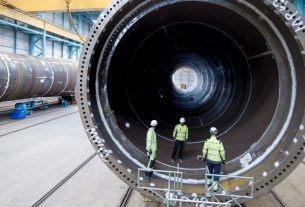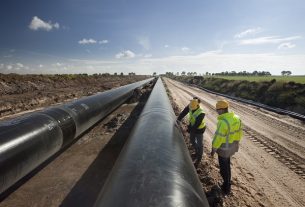Germany – Strengthening pipeline infrastructure in particular is an important prerequisite for keeping European industry both sustainable and competitive, according to Thorsten Dreier, CTO of Covestro. Not only hydrogen and CO2 need to be considered. Ammonia transport, for example, should also be prioritised, according to Dreier.
Close cooperation between different industry clusters and different governments is essential, according to Dreier. And that may also be looked at intelligently. For instance, there seems to be enough support for a cross-border infrastructure for hydrogen and CO2. He certainly welcomes that, but Dreier would also like to make a case for infrastructure for ammonia in particular, which is still much debated. Partly because of its toxicity. ‘Actually, ammonia is nothing but a carrier of hydrogen. There is a good chance that green hydrogen will soon be transported overseas in the form of ammonia. Otherwise, you have to bring hydrogen to a very lower temperature to transport it on a large scale by ship. So why not also transport it in the form of ammonia by pipelines from ports to domestic clusters? Anyway, that is safer and also more efficient than, say, via inland navigation or tankers.’
Important building block
Several domestic chemical clusters also use ammonia as an important chemical building block. If so, it is very inefficient to first convert cheaply produced hydrogen in sun-drenched overseas areas to ammonia in order to immediately convert it back into hydrogen at ports, while ammonia is also an important building block, Dreier stresses. After all, every conversion costs energy.
Photo: Covestro





